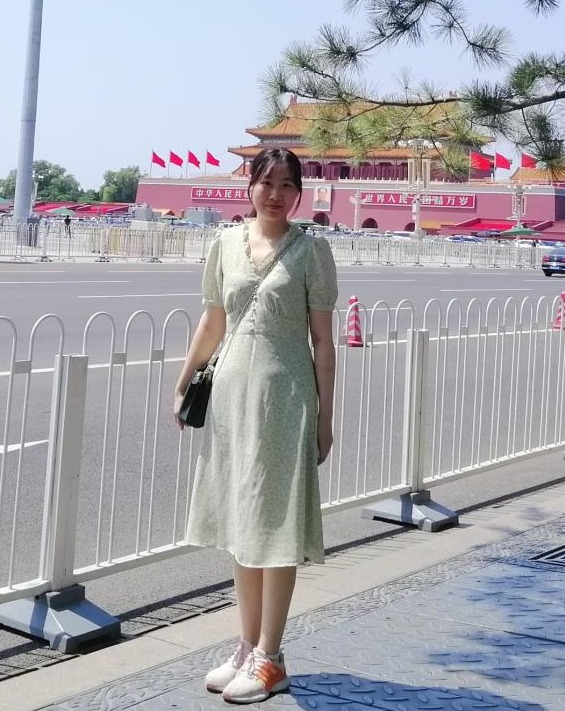
Speakers of EICCT 2025
| Ljiljana TrajkovicIEEE Fellow |
 | Yajuan Xue IEEE Senior Member, Vice Dean of the School of Communication Engineering Chengdu University of Information Technology, China Yajuan Xue, female, professor, CPC member, Ph. D. degree. She is the supervisor of part-time master's and doctoral students in Earth Exploration and Information Technology of Changjiang University. She is an outstanding expert with outstanding contributions in Sichuan Province, a reserve candidate of Sichuan Academic and Technical Leaders, and a recipient of Sichuan Outstanding Young Academic and Technical Leaders Funding Program. She is also a recipient of the Sichuan Provincial Outstanding Young Academic and Technical Leaders Grant Program. State-appointed Visiting Scholar, Department of Exploration Geophysics, Curtin University, Australia (2018). 2016 International Eni Award Nominee. In recent years, she has published more than 120 papers in high-level journals and conferences at home and abroad, of which 48 are SCI-indexed (13 SCI TOP journals) and 63 are EI-indexed. She has published one monograph in Chinese, one chapter in English, and 13 authorized invention patents. She has presided over 20 vertical research projects, such as the National Natural Science Foundation of China (NSFC) and Youth Fund, the Sichuan Provincial Central Guided Local Science and Technology Development Special Project, and the Sichuan Provincial Outstanding Young Academic and Technological Leaders Funding Program, as well as a number of horizontal collaborative projects. In addition, she has participated in 5 national projects as a key researcher in the National Natural Science Foundation of China (NSFC), key projects, top-level projects, and sub-projects of the National Key Research and Development Program of the Ministry of Science and Technology (MOST), as well as a number of Sinopec and Petrochina cooperative projects. She is a senior member of IEEE, an active member of SEG, a life member of China Geophysical Society, and a member of China Communications Society. She is an expert of the National Science and Technology Expert Database, an expert of the National Key R&D Program of the Ministry of Science and Technology, an expert of the Science and Technology Talent Award of the China Association for Science and Technology, an expert of the National Natural Science Foundation of China, an expert of the China Postdoctoral Science Fund, an expert of the Scientific Research and Development Center of Higher Education Institutions of the Ministry of Education, an expert of the Chengdu-Chongqing Twin Cities Economic Circle Science and Technology Innovation Alliance, an expert of the Sichuan Science and Technology Department. She is also a technical expert of Chongqing Municipal Science and Technology Expert Pool, Zhejiang Province Science and Technology Expert Pool, and Guangxi Science and Technology Expert Pool. She serves as an editorial board member of Frontiers in Earth Science, an international SCI journal, and a youth editorial board member of Oil and Gas Geology, an EI journal. He is an academic member of Key Laboratory of Petrophysics, Southwest Oil and Gas Field Branch, PetroChina. She is an academic member of the Key Laboratory of Petrophysics, Southwest Oil and Gas Field Branch of PetroChina. She is a member of the editorial board of Surveys in Geophysics, Geophysics, Journal of Petroleum Science and Engineering, IEEE Transactions on Geoscience and Remote Sensing, SCIENCE CHINA Earth Sciences. SCIENCE CHINA Earth Sciences”, ‘IEEE Transactions on Neural Systems & Rehabilitation Engineering’, ‘IEEE Signal Processing Letters’, ”IEEE Geoscience and remote sensing letters, Data Mining and Knowledge Discovery, Digital Signal Processing, Proceedings of the Royal Society A: Mathematical, Physical and Engineering Sciences, IEEE Transactions on Neural Systems & Rehabilitation Engineering Data Mining and Knowledge Discovery, Digital Signal Processing, Proceedings of the Royal Society A: Mathematical, Physical and Engineering Sciences, Measurement, etc. He is a reviewer for more than 40 international SCI journals. He is mainly engaged in algorithmic and applied research related to signal processing and information extraction, earth exploration and information technology. |
| Zilong LiuIEEE Senior Member |
| Bo Dong Shenzhen High-level Talents Shenzhen Technology University, China Bo Dong is a Distinguished Professor at the School of Integrated Circuits and Optoelectronic Chips, Shenzhen University of Technology. He received his Ph.D. degree in Optics from Nankai University and Ph.D. degree in Electrical and Computer Engineering from National University of Singapore (NUS) in June 2008 and December 2015, respectively. He was a postdoctoral fellow at Laurier University (Canada) from 2008-2009, and worked as a scientist at A*STAR Research Institute of Infocommunications (Singapore) from 2009-2017, where he was a member of the NRSERC. He has led and participated in a number of collaborative projects with NRSERC (Canada), NRF (Singapore), 863 (China), NSF (China), and Airbus (Europe), ST (Singapore), SMRT (Singapore), etc. He is also a scientist at A*STAR Institute of Information and Communications Research (Singapore). He has achieved a series of innovative results in new photonic integrated devices and applications, optoelectronic detection, etc. He has published more than 100 papers in international famous optoelectronic journals, applied for 21 patents, and authorized 10. The results of the projects done were awarded the 2013 ASEAN Outstanding Engineering Achievement Award and Singapore Outstanding Engineering Achievement Award. He has been invited to give invited lectures at more than 10 international conferences, and served as the chair of more than 10 international conferences and technical committee members. He serves as a subject editor of Applied Optics, a prestigious optoelectronics journal of OSA, and as an editorial board member of Structural Monitoring and Maintenance, a journal of KAIST, Korea. |
 | Yong Jia IEEE Member, Director of the Department of Information Engineering, School of Mechanical and Electrical Engineering Chengdu University of Technology He graduated from University of Electronic Science and Technology (UEST) with a PhD degree in Signal and Information Processing, and came to the university in July 2014, and is currently the head of Information Engineering Department in College of Electrical and Mechanical Engineering. He is one of the thirteenth batch of reserve candidates of academic and technical leaders in Sichuan Province, the first batch of double leaders of Chengdu University of Technology, the cultivation target of the Party Branch Secretary Workshop, the young and middle-aged backbone teachers of Chengdu University of Technology, the backbone members of Chengdu University of Technology's Signal and Information Processing Scientific Research and Innovation Team, and an expert of the “Support Program for Innovative Talent Teams of Colleges and Universities and Enterprises” in Suining City, the leading expert of the team. He is a member of the Chengdu Information Economics Association, a member of the Institute of Electronics, the Institute of Communications and the IEEE, and a visiting scholar at Villanova University in the United States. |
| Zhengchuan Chen IEEE Senior Member Chongqing University, China Zhengchuan Chen (M’16) received the B.S. degree from Nankai University, China, in 2010 and the Ph.D. degree from Tsinghua University, China, in 2015. He visited The Chinese University of Hong Kong in 2012 and visited University of Florida, USA, in 2013. From 2015 to 2017, he was a Postdoctoral Fellow in the Information Systems Technology and Design Pillar, Singapore University of Technology and Design (SUTD). He is currently a Professor with the School of Microelectronics and Communication Engineering, Chongqing University, China. His main research interests include 5G and beyond wireless communications, age of information, and network information theory. Dr. Chen serves as the editor of IEEE Open Journal of the Communications Society,the editor of Digital Communications and Networks. He has also served several IEEE conferences, e.g., the IEEE Globecom, as a Technical Program Committee Member. He was selected as an Exemplary Reviewer of the IEEE Transactions on Communications in 2015. He received the Best Paper Award at the International Workshop on High Mobility Wireless Communications in 2013. |
 | Dongfang Li Chengdu University of Information Technology, China Li Dongfang, female, Associate Professor, born in 1987, member of the Communist Party of China, holds a doctoral degree and a postdoctoral degree. She obtained her bachelor's, master's, and doctoral degrees in Electromagnetic Fields and Microwave Technology from University of Electronic Science and Technology of China. In recent years, she has published over 10 papers in high-level journals and at important academic conferences both domestically and internationally. Currently, she is leading three research projects, including a national-level special project, a Sichuan Provincial Department of Education Youth Science Fund Project, and a university talent startup project, as well as one collaborative project. She has also participated in multiple national-level projects, including National Natural Science Foundation projects and key projects. Her primary research areas include: microwave and millimeter-wave radio frequency integrated circuits, mixed-signal specialized integrated circuits and systems, and wireless communication technology and applications. |



